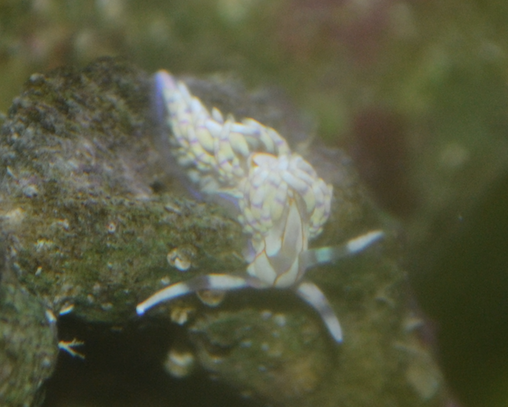Summary
This vibrantly colored, soft bodied animal is part of the Infraclass Opisthobranch, a group of mollusks that have broken from the characteristic body plan by secondarily losing their chitinous shell. The dorsal side of this species is covered in tufted cerata containing "naked gills", that allow direct intake of oxygen from the environment. This free living species seeks out its hydroid prey using cladistically unique chemeosensory rhinophores, located anterior to the ceratal tufts, to detect the chemical signals of it's prey item. Upon ingesting it's stinging food source this species of nudibranch utilizes the unfired nematocysts of its prey in it's own defense, incorporating them into it's own anatomy. The bright coloration of Godiva has twin purpose; as warning of the painful cargo it carries, as well as camouflage for the flamboyantly colored reef flat it inhabits throughout its West Indo-pacific range.

|
| Figure 1. Godiva specimen traversing boulder in home aquarium |
|